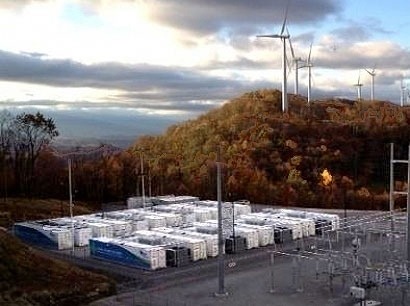
The wind farm in question, called Laurel Mountain, is located between the counties of Randolph and Barbour in the state of West Virginia [see inset]. The installation consists of 61 GE wind turbines with a capacity of 1.6 MW each. The battery storage system has a total capacity of 32 MW and is made up of A123 Systems batteries.
AES Wind Generation, the subsidiary that operates the wind farm, says that the installation provides the local network operator, PJM Interconnection, with "instantaneous response" to any demand for additional power, "helping to match generation and demand", as well as providing other system regulation services, such as smoothing ramp events when the wind farm starts generating energy or when its output fluctuates on gusty winds.
The silver bullet
Potentially, the deployment of this technology could allow the wind industry to move into the secondary power regulation market, where the ability to increase and decrease production is remunerated. "Energy storage technology is the silver bullet that helps resolve the variability in power demand,” says Terry Boston, PJM President and CEO. “Combining wind and solar with storage provides the greatest benefit to grid operations and has the potential to achieve the greatest economic value.”
“The Laurel Mountain project is a unique application of wind and battery storage technology combining clean energy production with state of the art grid support services,” said Phil Herrington, President of Global Wind Generation for AES. “We are very excited to be a part of this project, and couldn’t have completed this milestone without the overwhelming public support from the local community.”
With this project, AES Wind Generation has 72 MW of grid-scale storage resources in operation and construction and more than 500 MW of advanced energy storage projects in development.
For additional information:

